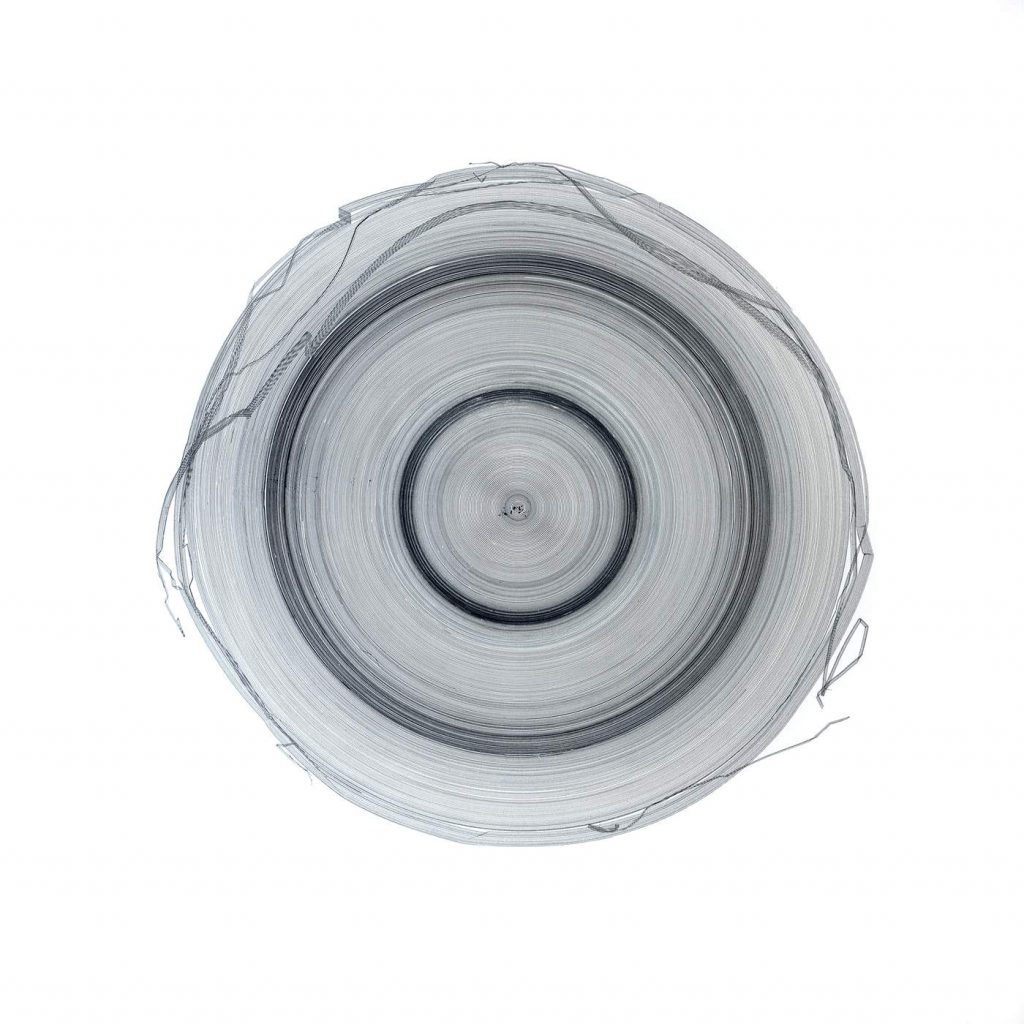The European Fine Art Foundation (TEFAF) is widely recognised as a pivotal institution. Its 2021 online fair ran from 9-13 September and featured 250 exhibitors. The fair aimed to connect discrete perspectives, cultures and categories of art through a curation process that encouraged conversation between pieces and concepts. Here, Metis takes a look at abstract art in the work of female artists exhibited at the fair, moving ourselves through strands of form, nature, colour and science that draw these pieces together.
Hélice – Olympe
Around 1970
Sonia Delaunay
Wool
200 x 160 cm
De Wit Fine Tapestries

A co-founder of the art movement “Orphic Cubism” or “Orphism”, Delaunay’s approach to modernity was to embrace the diversity of the arts in her practice. Delaunay worked to de-compartmentalise the various genres of art in her work, and Orphic Cubism, with its focus on the purity of colour and geometric forms, emphasises this. Although each element of the work is distinct there is a harmony in the sum of its parts: each line, colour and texture working to achieve a result that is timeless and classic.
–
Untitled
1970
Vivian Springford
Acrylic on canvas
98.1 x 129.5 x 3.8 cm
Almine Rech

Seductive and beguiling, Vivian Springford’s stain paintings were produced in the 1960s and 70s. Springford’s manipulation of colour is subtle yet stunning: as one colour mixes with another, new depths and dimensions are produced, giving the work a sense of movement that is both gentle and enigmatic, leaving the viewer soothed and reinvigorated.
–
Blue Moon
2021
Janaina Tschäpe
Casein and oil stick on canvas
294.6 x 393.7 cm
Sean Kelly

The movement in Tschäpe’s works suggests the fluidity of transition. Dreamlike landscapes blur the border between reality and imagination; the work feels like a portal to another world. Tschäpe’s pieces are also the product of accruation, with each layer of the work inviting the viewer to ruminate on what lies beneath the surface, the various textures working in tandem to evoke a sense of depth and mystery.
–
Ku-151 (Free Essence 151)
2021
Niyoko Ikuta
Glass
38.5 x 42 x 45cm
A Lighthouse called Kanata

The relatively recent history of glass art in Japan has allowed artists working with the form to create with freedom and a lightness of touch that springs free from tradition. This enthusiastic energy is captured in the works of Niyoko Ibuta. The lines of her sculptures are precisely wrought; melded with the inherent movement of the form, this results in works that seem to be captured mid-flight, as if the viewer is privy to the delicate mechanisms of a body in motion.
–
Elbe
2014
Jill Baroff
Pigmented ink on Japanese gampi mounted on rag
115 x 115 cm
Bartha Contemporary

Jill Baroff’s Tide drawings interpret data recorded for forecasting tides. The necessary geometricism of the science is represented in Baroff’s works, translating into circular, grid or linear arrangements. This particular work draws on data recorded at the tidal river Elbe, and the creation process included a tearing of the drawing’s outer edge, thus implying the inherent destruction of storms. The work’s geometric forms are a product of precise deliberations, and this, coupled with the work’s reference to nature, captures some of the essence of abstraction as a movement.








